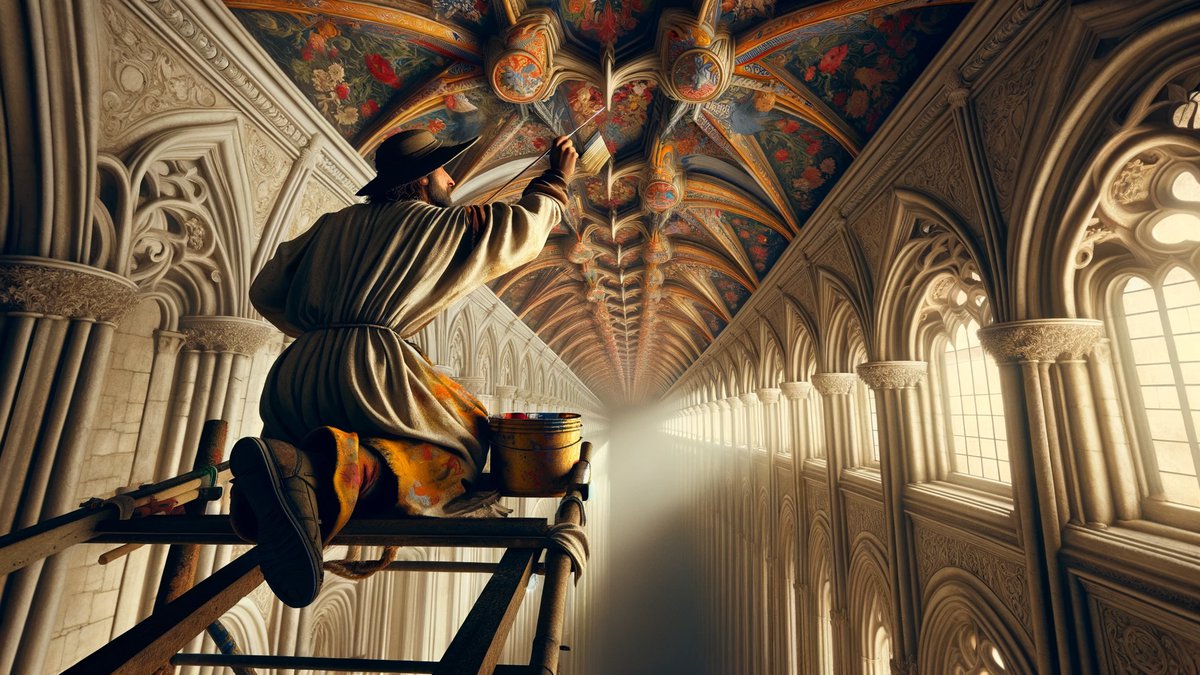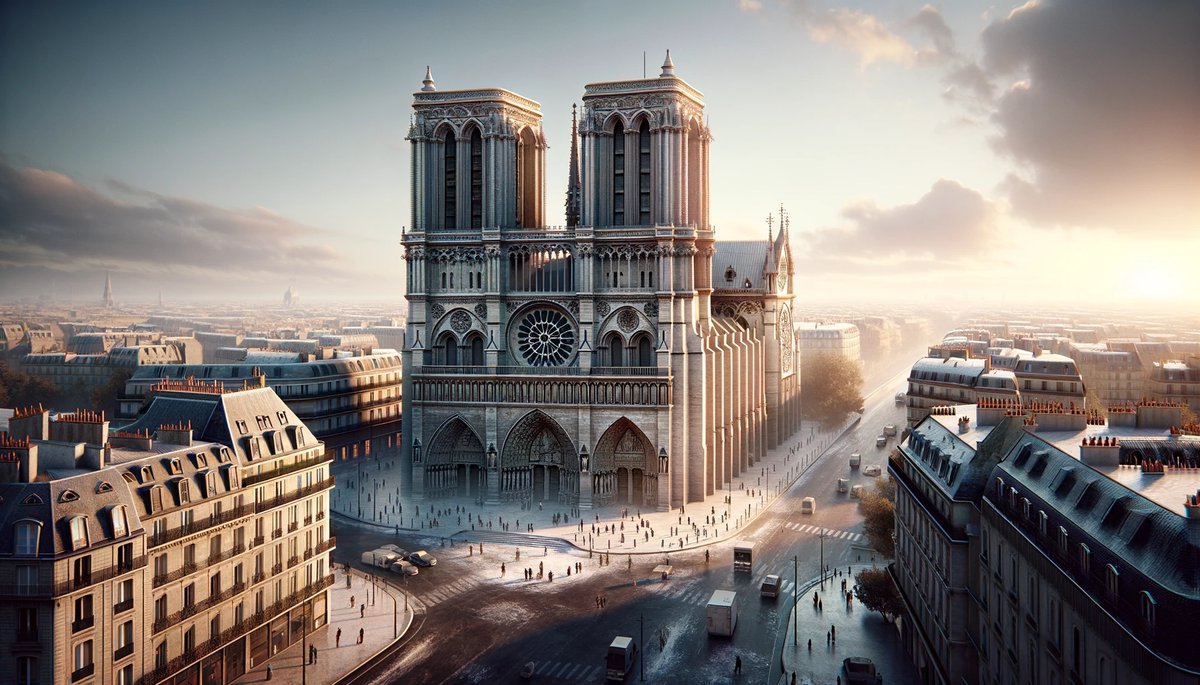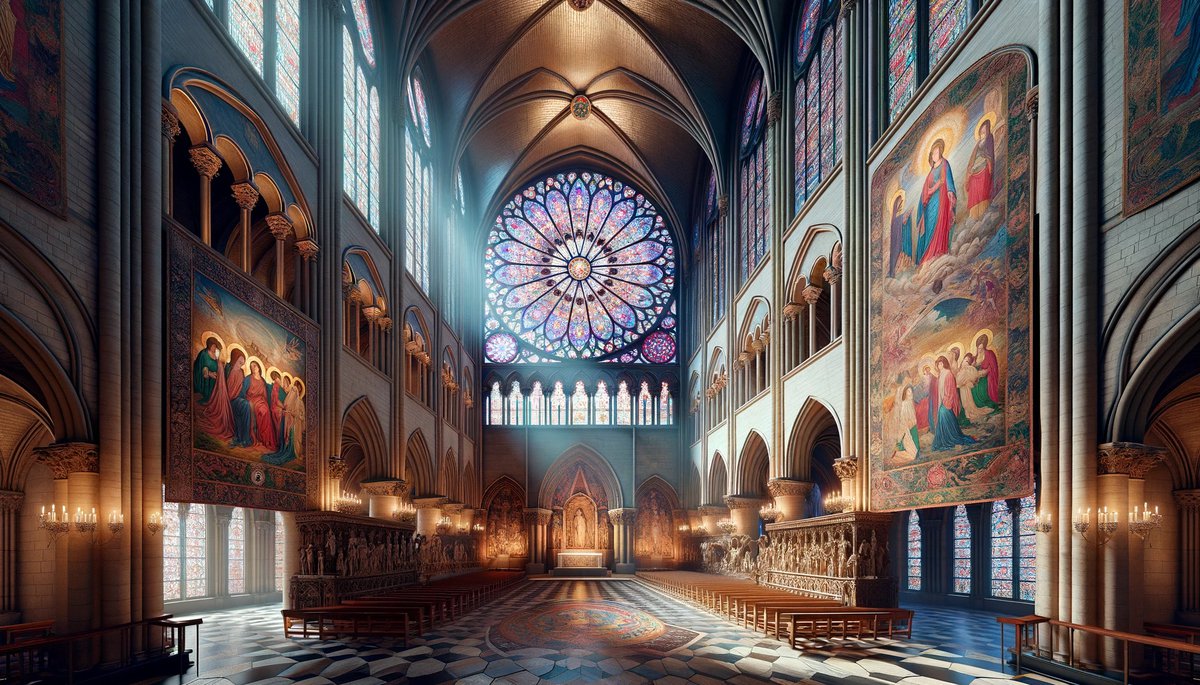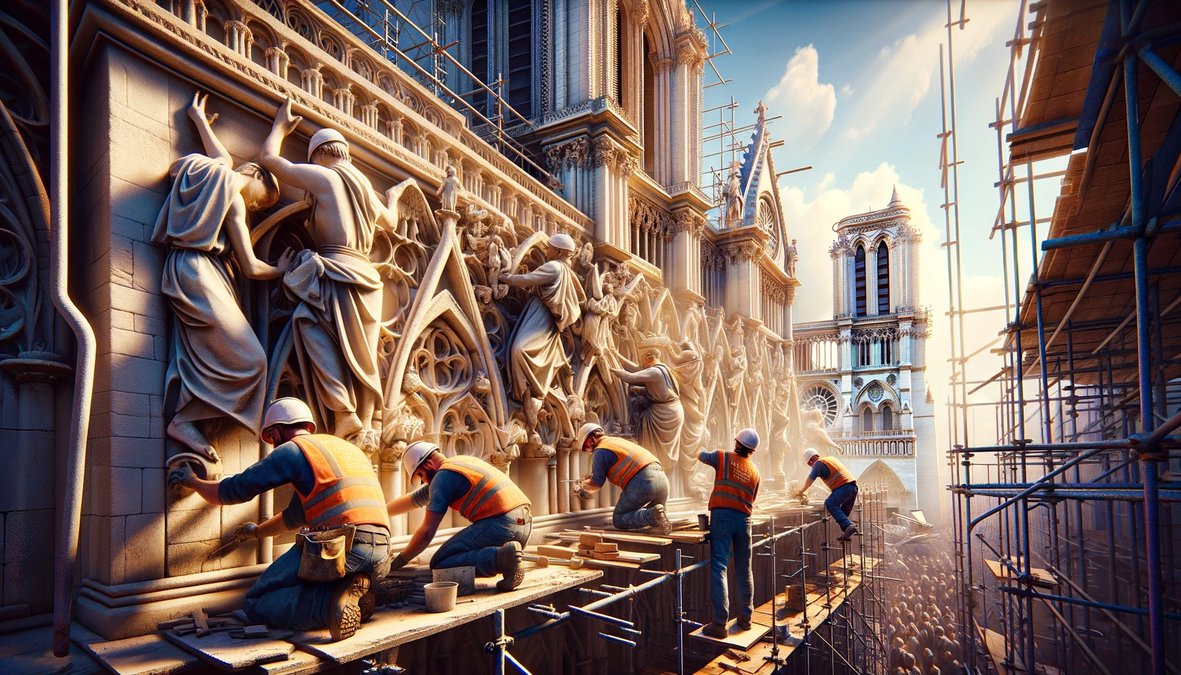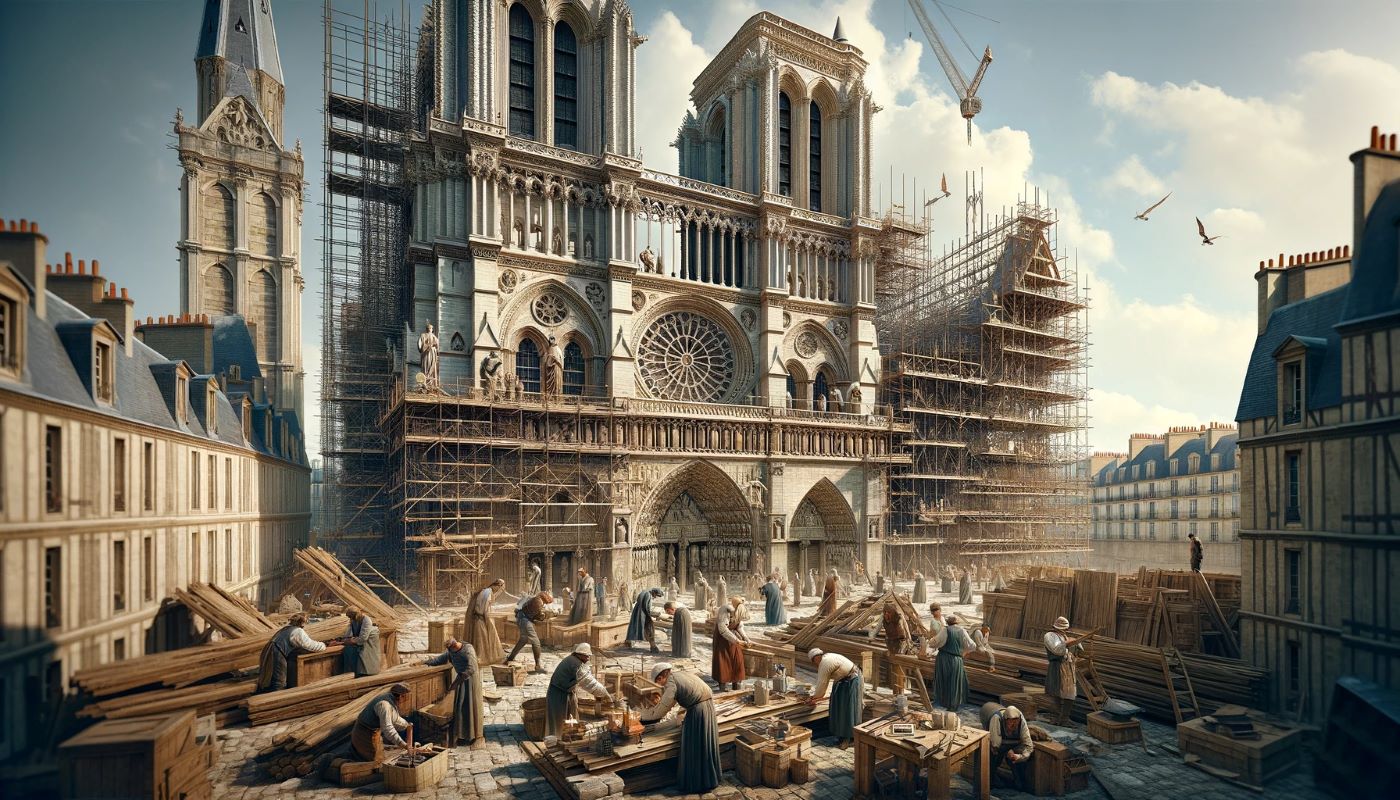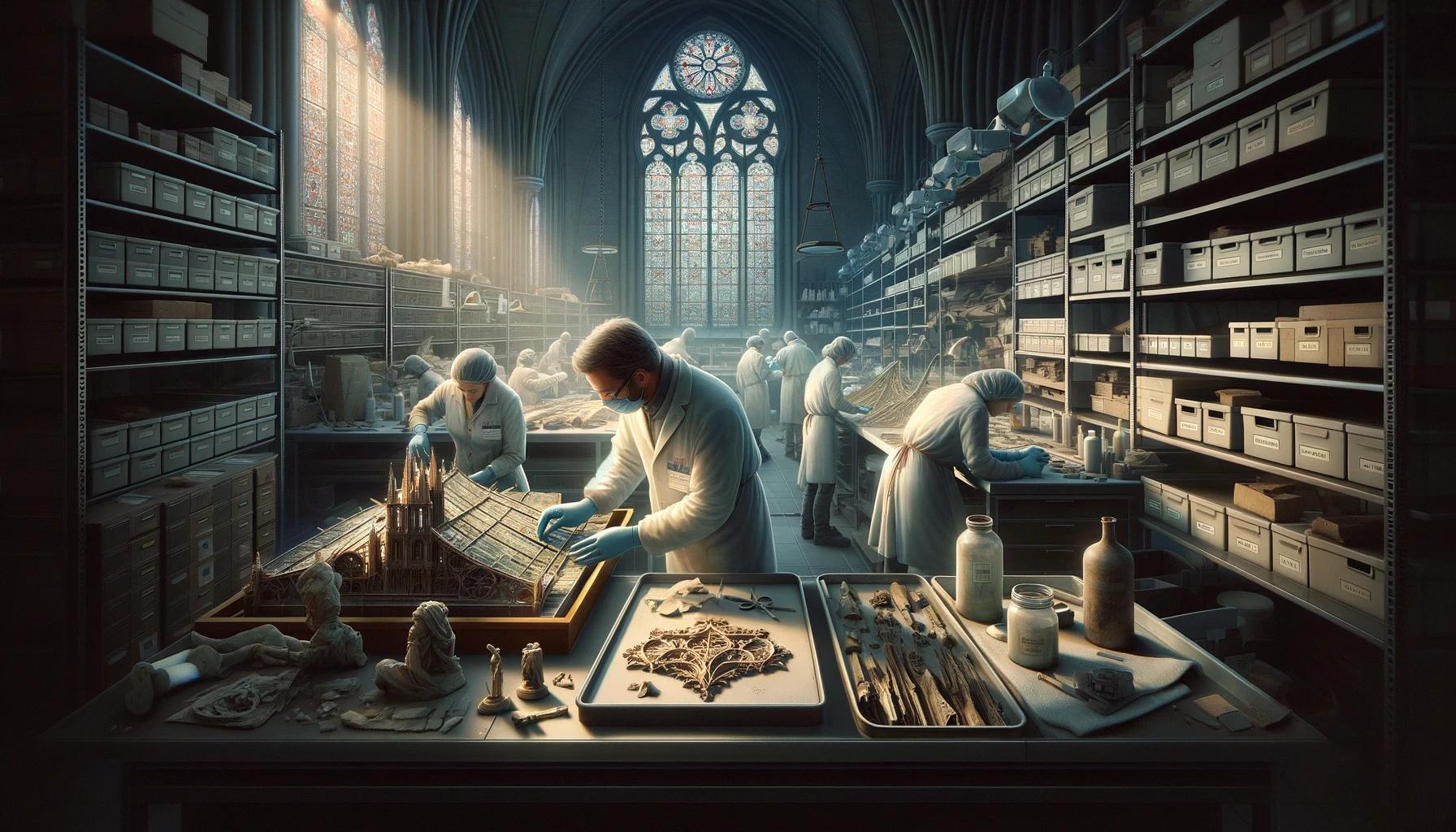Home>Arts and Culture>Who Owns Notre Dame Cathedral In France
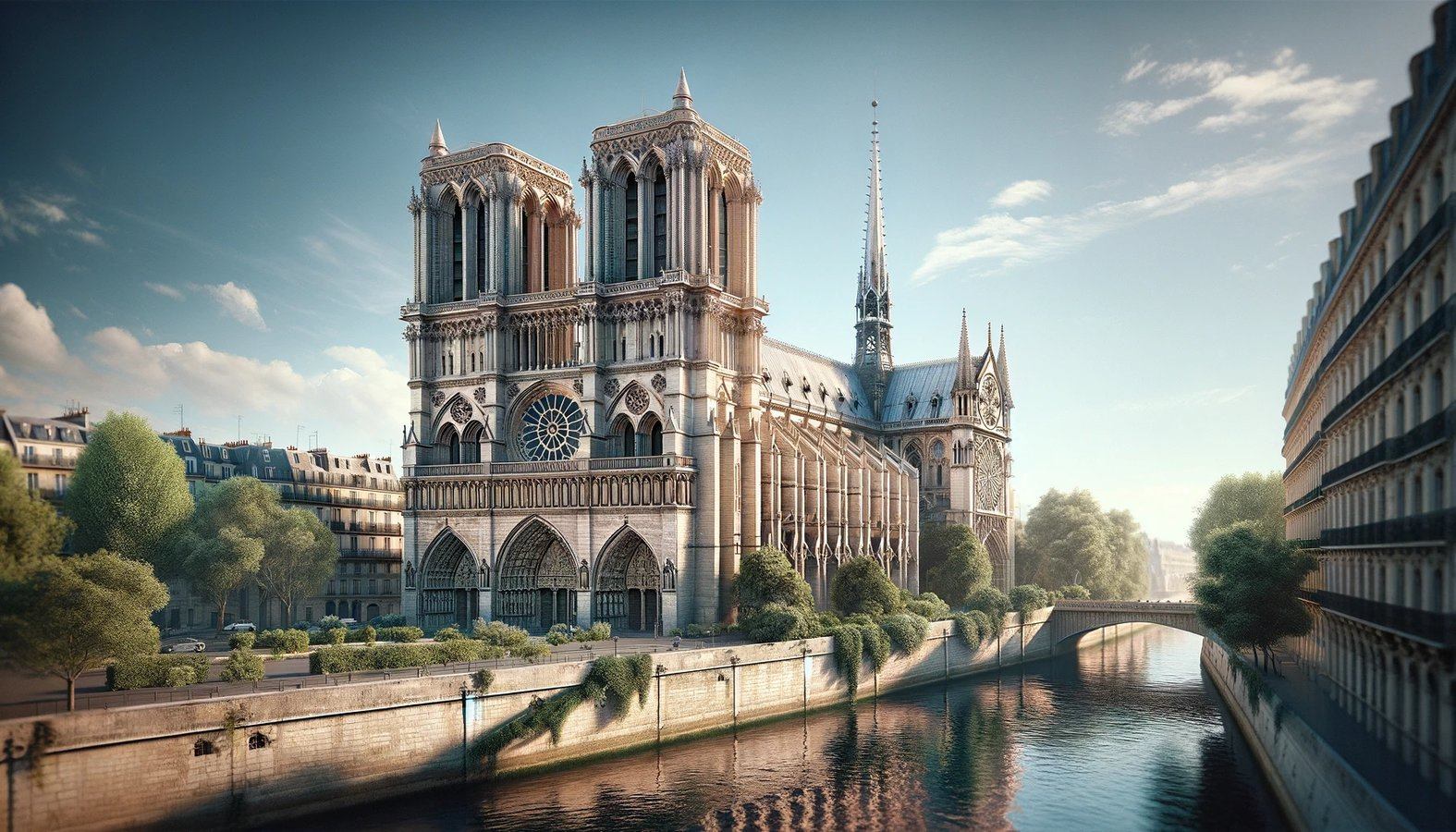

Arts and Culture
Who Owns Notre Dame Cathedral In France
Published: February 18, 2024
Ericka Andersen, an editor at Christian.net, expertly merges digital strategy with content creation, focusing on faith and societal issues. Her communication skills enhance the platform's engaging narratives, fostering meaningful dialogue on belief's impact on society.
Discover the ownership of Notre Dame Cathedral in France and its significance in arts and culture. Learn about the historical and cultural importance of this iconic landmark.
(Many of the links in this article redirect to a specific reviewed product. Your purchase of these products through affiliate links helps to generate commission for Christian.net, at no extra cost. Learn more)
Table of Contents
Introduction
The Notre Dame Cathedral in Paris, France, is a timeless symbol of architectural grandeur, spiritual significance, and historical resonance. This iconic structure stands as a testament to human ingenuity and artistic expression, captivating the hearts and minds of millions of visitors from around the world. With its awe-inspiring Gothic design, intricate sculptures, and majestic rose windows, Notre Dame Cathedral has etched itself into the collective consciousness as a beacon of cultural heritage and artistic mastery.
The cathedral's rich tapestry of history, artistry, and religious significance has made it a focal point of global fascination and admiration. Its construction, which began in the 12th century and continued for over a hundred years, represents a remarkable feat of medieval engineering and craftsmanship. The cathedral's soaring spires, imposing facades, and ornate interiors serve as a testament to the unwavering dedication of the artisans and builders who brought this architectural marvel to life.
Beyond its architectural splendor, Notre Dame Cathedral has played a pivotal role in the cultural and religious fabric of France. It has witnessed coronations, royal weddings, and significant historical events, serving as a silent witness to the ebb and flow of centuries. The cathedral's sacred aura, enriched by its role as a place of worship and pilgrimage, has imbued it with a profound spiritual significance that transcends time and borders.
As a cherished symbol of French identity and a UNESCO World Heritage site, Notre Dame Cathedral continues to inspire reverence and admiration. Its enduring allure beckons visitors to marvel at its timeless beauty, contemplate its historical significance, and immerse themselves in the palpable aura of centuries past. The cathedral stands as a living testament to the enduring power of human creativity, resilience, and the pursuit of transcendence through art and architecture.
In the following sections, we will delve into the captivating history of Notre Dame Cathedral, explore the intricacies of its ownership, examine its current management, and contemplate the future plans that seek to preserve and honor this architectural masterpiece for generations to come. Join us on this enlightening journey through the annals of time and the enduring legacy of Notre Dame Cathedral.
Read more: Who Insured Notre Dame Cathedral
History of Notre Dame Cathedral
The history of Notre Dame Cathedral is a captivating tapestry woven with threads of architectural innovation, cultural evolution, and historical significance. Construction of this magnificent edifice commenced in 1163 during the reign of King Louis VII and continued for nearly a century, culminating in its completion in 1260. The cathedral's architectural design, attributed to Bishop Maurice de Sully, embodies the quintessence of Gothic style, characterized by its soaring spires, ribbed vaults, and captivating rose windows.
Notre Dame Cathedral stands as a testament to the medieval craftsmen's ingenuity and unwavering dedication, as they meticulously sculpted its intricate facades, adorned its interiors with ornate sculptures, and erected its iconic bell towers. The cathedral's construction marked a pivotal moment in the evolution of Gothic architecture, showcasing the innovative use of flying buttresses to support its lofty walls and vaulted ceilings, allowing for expansive stained glass windows that suffuse its interiors with ethereal light.
Throughout the centuries, Notre Dame Cathedral bore witness to a myriad of historical events, serving as a backdrop for royal coronations, significant religious ceremonies, and moments of national importance. Its hallowed halls echoed with the solemnity of royal weddings, the resonance of sacred chants, and the collective prayers of pilgrims seeking solace and spiritual enlightenment.
The cathedral's enduring legacy transcends its architectural magnificence, as it became a literary muse for Victor Hugo's renowned novel, "The Hunchback of Notre Dame," further cementing its indelible imprint on the cultural landscape. Despite enduring periods of neglect and restoration, Notre Dame Cathedral persevered as a symbol of resilience, emerging from the ravages of time and conflict with an unyielding spirit that captivates the imagination and reverence of all who behold it.
Today, Notre Dame Cathedral stands as a living testament to the enduring power of human creativity, spiritual devotion, and the timeless allure of architectural splendor. Its rich history, steeped in the annals of time, continues to beckon visitors to traverse its hallowed aisles, gaze upon its majestic spires, and immerse themselves in the palpable aura of centuries past. As the custodian of a storied past and a beacon of artistic mastery, Notre Dame Cathedral remains an enduring testament to the indomitable spirit of human endeavor and the enduring legacy of cultural heritage.
Ownership of Notre Dame Cathedral
The ownership of Notre Dame Cathedral, a cultural and architectural marvel, has been a subject of historical intricacy and institutional stewardship. Since its inception, the cathedral has been intrinsically linked to the French state, signifying a union of spiritual and secular authority. Historically, the ownership of Notre Dame Cathedral was vested in the Catholic Church, symbolizing its role as a spiritual sanctuary and a bastion of religious devotion. However, the relationship between the church and the state has evolved over the centuries, shaping the dynamics of ownership and custodianship of this iconic edifice.
Following the French Revolution in the late 18th century, the ownership of Notre Dame Cathedral underwent a significant transformation. The revolutionary government, in an endeavor to secularize the nation and diminish the influence of the Catholic Church, appropriated the cathedral and repurposed it as a Temple of Reason. This marked a pivotal shift in the ownership structure, as the cathedral transitioned from ecclesiastical ownership to state control, reflecting the changing tides of political and religious authority in France.
In the modern era, the ownership of Notre Dame Cathedral is vested in the French state, specifically under the guardianship of the Ministry of Culture. This arrangement underscores the cathedral's status as a national heritage site and a symbol of French identity, placing it under the protective mantle of governmental oversight and preservation. The state's custodianship of Notre Dame Cathedral signifies a commitment to safeguarding its historical, cultural, and architectural significance for future generations, ensuring that it endures as a testament to human creativity and spiritual devotion.
Furthermore, the ownership of Notre Dame Cathedral is imbued with a profound sense of collective responsibility, as it represents a shared legacy that transcends individual ownership or institutional authority. The cathedral's intrinsic value as a cultural treasure and a testament to human ingenuity underscores the collective custodianship of society at large, emphasizing the need for collaborative efforts to preserve and protect this architectural masterpiece.
In essence, the ownership of Notre Dame Cathedral reflects a nuanced interplay of historical, religious, and governmental forces, culminating in a shared commitment to safeguarding its legacy for posterity. As a symbol of national pride and a beacon of artistic and spiritual transcendence, Notre Dame Cathedral stands as a testament to the enduring resonance of human creativity and the collective stewardship of cultural heritage.
Current Management of Notre Dame Cathedral
The current management of Notre Dame Cathedral encompasses a multifaceted approach to preservation, restoration, and public access, reflecting a harmonious blend of historical stewardship and contemporary conservation efforts. Following the devastating fire that engulfed the cathedral's iconic spire and roof in April 2019, the management of Notre Dame Cathedral has been propelled into the global spotlight, eliciting an outpouring of support and solidarity from individuals, institutions, and governments.
At the helm of the cathedral's management is the Centre des Monuments Nationaux (CMN), a governmental body entrusted with the oversight of national heritage sites, including Notre Dame Cathedral. The CMN, in collaboration with a dedicated team of architects, conservators, and experts, has embarked on a comprehensive restoration initiative aimed at preserving the cathedral's architectural integrity and historical significance. This endeavor encompasses meticulous assessments of structural stability, the preservation of priceless artworks, and the delicate task of reconstructing the cathedral's damaged elements while adhering to the principles of historical authenticity and artistic fidelity.
Furthermore, the management of Notre Dame Cathedral extends beyond the realm of physical restoration, encompassing the imperative of ensuring public engagement and accessibility. The cathedral continues to welcome visitors, offering guided tours that provide insight into its rich history, architectural splendor, and the ongoing restoration efforts. This commitment to public engagement underscores the cathedral's role as a living monument, inviting individuals from across the globe to partake in its timeless legacy and contribute to its preservation through their patronage and support.
In addition to the CMN's stewardship, the management of Notre Dame Cathedral is bolstered by collaborative partnerships with philanthropic organizations, cultural institutions, and international experts in heritage conservation. These alliances serve as a testament to the global significance of Notre Dame Cathedral and the collective resolve to safeguard its legacy for future generations.
As the cathedral continues to undergo meticulous restoration and adaptive management, the spirit of resilience and renewal pervades its hallowed precincts. The management of Notre Dame Cathedral stands as a testament to the enduring commitment to honor its historical resonance, celebrate its artistic magnificence, and ensure that it remains a beacon of cultural heritage and spiritual inspiration for centuries to come.
Future Plans for Notre Dame Cathedral
The future plans for Notre Dame Cathedral are imbued with a profound sense of restoration, renewal, and reverence, encapsulating a collective commitment to honor its historical legacy and ensure its enduring resonance for generations to come. In the wake of the devastating fire that engulfed the cathedral in April 2019, the trajectory of its future has been shaped by a resolute determination to restore its architectural splendor, preserve its cultural significance, and reaffirm its status as a symbol of human creativity and spiritual transcendence.
Central to the future plans for Notre Dame Cathedral is the ambitious restoration initiative, which seeks to meticulously reconstruct and revitalize its damaged elements while preserving the authenticity of its historical fabric. This endeavor entails a meticulous assessment of the cathedral's structural integrity, the preservation of its priceless artworks and artifacts, and the delicate task of reinstating its iconic spire and roof. The restoration efforts are guided by a steadfast commitment to historical accuracy, artistic fidelity, and the integration of innovative conservation techniques to ensure that the cathedral emerges from its restoration with renewed splendor and timeless allure.
Furthermore, the future plans for Notre Dame Cathedral encompass a reinvigorated dedication to public engagement, accessibility, and educational outreach. The cathedral aspires to serve as a living monument that invites visitors from across the globe to partake in its rich tapestry of history, artistry, and spiritual significance. Through guided tours, educational programs, and immersive experiences, Notre Dame Cathedral aims to foster a deeper appreciation for its cultural heritage, architectural magnificence, and the enduring legacy of human ingenuity that it embodies.
In addition to the physical restoration and public engagement initiatives, the future plans for Notre Dame Cathedral are underpinned by a commitment to sustainable preservation and adaptive management. The cathedral seeks to integrate environmentally conscious practices into its restoration efforts, ensuring that its legacy is safeguarded in harmony with the principles of ecological stewardship and cultural sustainability. This forward-looking approach underscores the cathedral's enduring relevance in an ever-evolving world, positioning it as a beacon of cultural heritage that resonates with contemporary sensibilities and future aspirations.
As Notre Dame Cathedral embarks on its journey of renewal and revitalization, its future plans stand as a testament to the enduring spirit of resilience, the transformative power of restoration, and the timeless allure of artistic and spiritual transcendence. Through a harmonious synthesis of preservation, public engagement, and sustainable stewardship, Notre Dame Cathedral is poised to emerge from its restoration as a living testament to the indomitable spirit of human creativity and the enduring legacy of cultural heritage.




